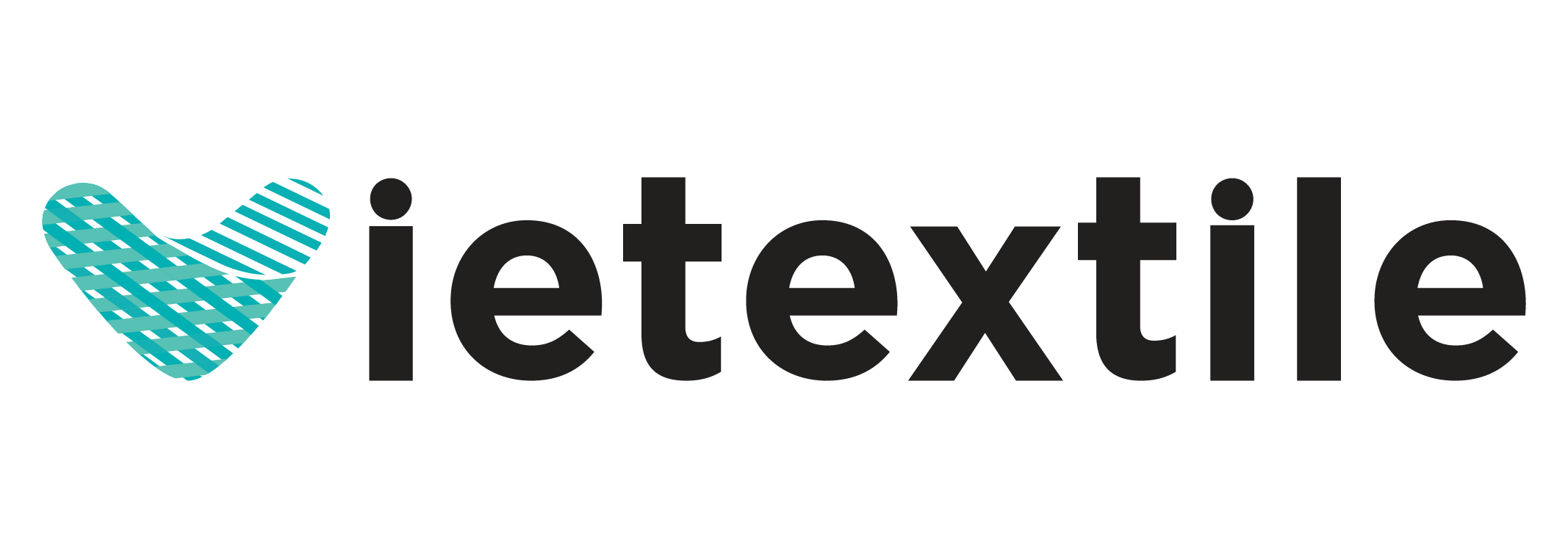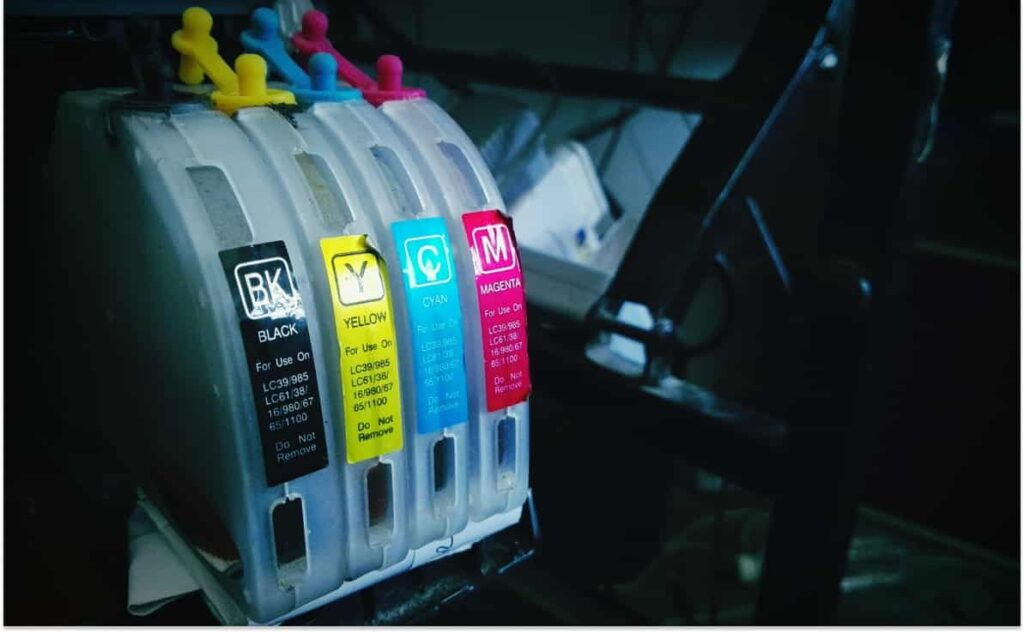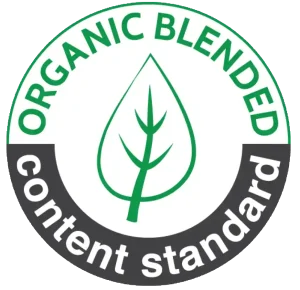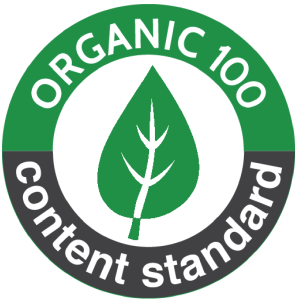Indanthrene Dyes (or Vat Dyes) represent the pinnacle of color technology in the textile industry, providing near-absolute color fastness, particularly the highest level of light fastness and wash fastness available in textile dyeing and printing. Due to these properties, Indanthrene Dyes are the mandatory choice for products requiring non-fading color quality, such as military uniforms, outdoor upholstery fabrics, or protective workwear.
However, the use of Indanthrene Dyes demands precise chemical knowledge and technical execution. Unlike water-soluble Reactive Dyes, Indanthrene Dyes are insoluble in water in their original form. For use, they must undergo a Reduction (Vatting) process, transforming into a water-soluble salt called Leuko Salt, only then can they be printed onto the fabric and fixed.
The complexity of controlling the reduction environment (temperature, alkali, reducing agent) is the main cause of printing faults such as pale colors, uneven fixation, or staining the ground fabric.
This article provides detailed, industry-standard instructions on How to Prepare Indanthrene Dyes Correctly to ensure maximum print paste stability, resulting in deep, even, and non-staining colors.
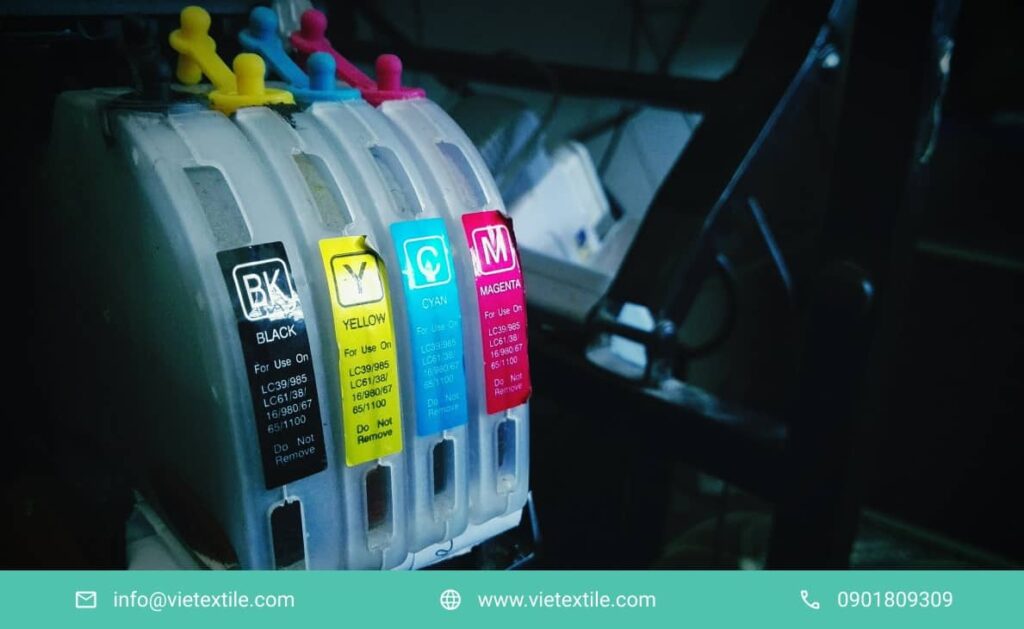
1. Chemical Mechanism of Indanthrene Dyes
Nội dung tóm tắt
ToggleTo formulate a Vat Dye print paste, a clear understanding of their three fundamental chemical stages is essential.
1.1. Original State (Vat Pigment)
In their initial powder form, Indanthrene Dyes are water-insoluble color particles (Pigments). They have complex chemical structures, often compounds containing Carbonyl groups (C=O) such as Indanthrone or Anthraquinone.
1.2. The Reduction Process
This is the most critical step. Indanthrene Dyes are converted into their soluble form (Leuko Salt) so they can permeate the Cotton fiber.
The general formula for the reduction process is: Vat Dye (insoluble form) + Reducing Agent (Sodium Hydrosulfite – Na2S2O4) + Alkali (NaOH) Leuko Salt (soluble form, different color) under the influence of High Temperature.
The Leuko Salt form is an Anion (negative charge) and possesses strong diffusion and Adsorption capability onto the Cellulose fiber in an alkaline medium.
1.3. The Oxidation Process
After printing and fixation, the Leuko Salt is converted back into its original insoluble Pigment form, locking it tightly within the fiber structure.
The formula is: Leuko Salt (soluble) + Oxygen (from air or oxidizing agent) Vat Dye (insoluble Pigment form, permanent color) after Water Rinsing.
This oxidation process is what gives Indanthrene Dyes their “permanent” color fastness.
2. Common Types of Indanthrene Dyes
Indanthrene Dyes are classified into groups based on their reduction conditions:
- Cold Dyeing Indanthrene Dyes (IK): Require low reduction temperature (20-30C). Suitable for light blues and greens.
- Warm Dyeing Indanthrene Dyes (IN): Require medium temperature (40-50C). The most common group.
- Hot Dyeing Indanthrene Dyes (IW): Require high temperature (50-60C). Typically used for black, brown, and orange colors, which demand high color depth.
Selection: The preparation of the Vat Dye paste must be based on the dye group (IK, IN, IW) to accurately determine the required temperature and chemical concentration.
3. Standard Industrial Vat Dye Paste Preparation Process
The Vat Dye preparation process is executed in 3 main phases: Printing Paste Preparation, Leuko Salt Formation, and Finishing.
3.1. Phase 1: Printing Paste Preparation (Thickening Paste)
Objective: To create a viscous medium to hold the dye on the fabric surface and prevent bleeding before fixation.
| No. | Raw Material | Ratio (Customizable) | Function |
| 1 | Sodium Alginate | 6-8% | Thickener (Prevents ink flow) |
| 2 | Soft Water | Remainder | Solvent |
| 3 | Vat Dye Pigment | 5-20% (by color requirement) | Colorant |
Note: The thickener must be Sodium Alginate (Alkali-Stable) because Indanthrene Dyes operate in a strong alkaline environment.
3.2. Phase 2: Reduction Process (Leuko Salt Formation)
This step determines printing efficiency and color uniformity.
3.2.1. Prepare Reduction Chemicals
- Alkali Agent: Sodium Hydroxide (NaOH, also known as Caustic Soda) at 38Be concentration. NaOH creates the necessary high pH environment (approx. 13) for the dye to convert into Leuko Salt.
- Reducing Agent: Sodium Hydrosulfite (Na2S2O4). A fresh, stable solution must be prepared to ensure maximum activity.
3.2.2. Steps to Form Leuko Salt
- Dissolve the Dye: Dissolve the Vat Dye powder in a small amount of warm water and NaOH (38Be) to form a slurry.
- Add Reducing Agent: Add Sodium Hydrosulfite (the reducing agent) to the mixture. The reduction process starts immediately.
- Temperature Control: Maintain the temperature according to the dye group (e.g., 40-50C for the IN group) for about 10-15 minutes. During this stage, the solution’s color will noticeably change (e.g., from blue to yellow for Indanthrene Blue), indicating Leuko Salt formation.
- Mix with Paste: After stable reduction, mix the prepared Leuko Salt solution with the printing paste from Phase 3.1 and stir thoroughly.
3.3. Phase 3: Finishing the Printing Paste
- Protective Colloid: Add a small amount of a protective agent like Glycine or similar. This agent helps stabilize the Leuko Salt, preventing premature oxidation (before printing) and extending the paste’s shelf life.
- Viscosity Adjustment: If necessary, adjust the viscosity using Sodium Alginate or water to suit the printing speed and fabric fineness.
4. Advanced Vat Dye Printing and Fixation Techniques

Even when the Vat Dye paste is prepared correctly, the printing and fixation process remains the critical factor determining color uniformity and depth.
4.1. Printing
Use Rotary Screen Printing machines or Digital Printing systems with specialized Vat Dye ink systems.
4.2. Drying Process
The fabric is gently dried at a low temperature (60-80C) immediately after printing. Avoid overheating, as this can reduce the activity of the Leuko Salt and cause premature, uneven color fixation.
4.3. Color Fixation (Steaming)
The color fixation process requires a hot steam environment with minimal air.
- Standard Conditions: Hot steam in a Steamer at 102-105C for 8-12 minutes.
- Mechanism: High temperature in saturated steam maintains the solubility of the Leuko Salt and promotes its thorough diffusion deep into the Cellulose structure of the fiber, ensuring deep color penetration.
4.4. Oxidation and Washing Off
This is the final step to achieve maximum color fastness.
- Oxidation: After Steaming, the fabric is treated with a mild oxidizing solution (typically Sodium Perborate – NaBO3) or Sodium Dichromate (Na2Cr2O7) to convert the Leuko Salt back into its original insoluble Pigment form. This can be done by dipping or simply by air exposure.
- Hot Washing Off (Soaping): The fabric is then washed with hot water (90-95C) and a strong Soaping Agent. The purpose is to completely remove excess chemicals and unfixed Pigment particles, ensuring high rub fastness and clean color.
5. Common Technical Faults in Vat Dye Preparation
Technical faults in the Vat Dye preparation process are often related to chemical stability.
| Technical Fault | Primary Cause | Control Solution |
| Pale/Insufficient Color Depth | Insufficient Hydrosulfite or inadequate reduction time. Or Leuko Salt oxidized prematurely during printing. | Control Hydrosulfite concentration by measuring Redox Potential. Add Protective Colloid to the printing paste. |
| Uneven Fixation | Uneven Steaming temperature or uneven distribution of alkali (NaOH) in the printing paste. | Ensure stable Steamer temperature and thoroughly stir the printing paste before use. |
| Staining the Ground Fabric | Incomplete Washing Off (Poor Washing Off). Hydrolyzed dye is not removed and adheres to the fabric background. | Increase Soaping temperature and time (Up to 95C). Use specialized Soaping Agents with the ability to sequester unfixed dye. |
| Unstable Print Paste | NaOH absorbed CO2 from the air, reducing pH. Or Hydrosulfite decomposed due to heat. | Prepare fresh NaOH and Hydrosulfite solutions. Store the printing paste in sealed containers, away from light and air. |
6. Quality Control: Redox Potential
In professional factories, the efficiency of the Vat Dye preparation process is strictly controlled by measuring the Redox Potential.
What is Redox Potential? It is an index measuring the Reducing Power of the Leuko Salt solution, measured in Millivolts (mV) against a reference electrode.
Control Standard: Each Vat Dye color (Indanthrene) has a standard Redox Potential. For example:
- Yellow might require a potential of -700 mV.
- Deep Blue might require -950 mV. If the mV does not meet the standard, the reduction process is incomplete, leading to pale or less durable colors.
Benefits: Measuring Redox Potential helps engineers to:
- Accurately determine the required amount of Hydrosulfite.
- Check the stability of the printing paste and Leuko Salt before use.
- Ensure color depth and formula repeatability.
7. Other Technical Factors Affecting Indanthrene Dyes
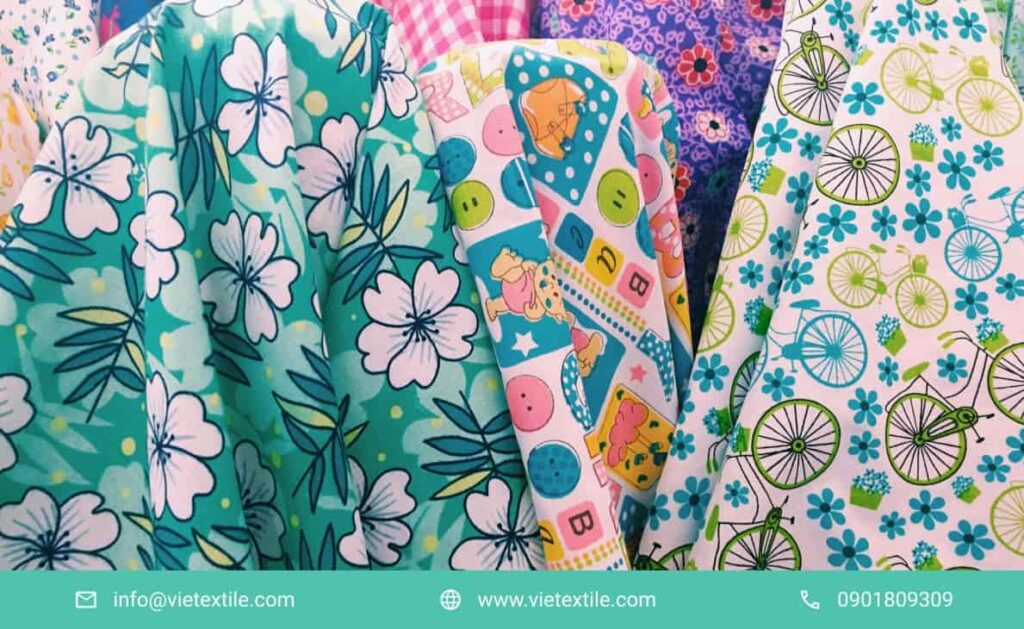
7.1. Fiber Structure (Cotton vs. Viscose)
Although Indanthrene Dyes are used for Cellulose fibers, Viscose fibers have higher porosity and absorbency than Cotton, leading to a faster diffusion rate of Leuko Salt. This requires adjusting the viscosity of the printing paste to prevent uneven spreading (bleeding) on Viscose.
7.2. Digital Vat Printing
Digital printing technology for Indanthrene Dyes is a major step forward, but it requires the Indanthrene Dyes to be in a super-fine Pigment form (Micro-fine Pigment) to avoid clogging the print heads.
Challenge: The reduction process must take place after printing (Post-reduction). This necessitates a Pre-treatment process containing a stable reducing agent and alkali activated by Steaming, increasing process complexity.
8. Frequently Asked Questions (FAQ) About Indanthrene Dyes
1. Question: What type of fabric are Indanthrene Dyes primarily used on? Answer: Indanthrene Dyes are primarily used on Cellulose fibers, especially Cotton, Linen, and Viscose (rayon). They are not used for printing on Polyester or Nylon.
2. Question: What is the role of Sodium Hydrosulfite (Na2S2O4) in Indanthrene Dyes? Answer: Sodium Hydrosulfite is the main Reducing Agent. Its role is to carry out the Reduction process, converting the Vat Dye from its water-insoluble Pigment form into the soluble Leuko Salt form, allowing the color to penetrate the fabric fibers.
3. Question: Why must the Vat Dye print paste use Sodium Alginate as a thickener? Answer: Indanthrene Dyes operate in a strong alkaline environment (pH around 13) due to the presence of Sodium Hydroxide (NaOH). Sodium Alginate is one of the few natural thickeners that are Alkali-stable and do not decompose or lose viscosity in this strong alkaline environment, ensuring print quality is not compromised by bleeding.
4. Question: Is the Oxidation process necessary? What happens if it’s omitted? Answer: The Oxidation process is mandatory. Without oxidation, the Leuko Salt (soluble form) cannot convert back into its original insoluble Pigment form. The result is that the color will be pale (because the Leuko Salt form is unstable) and easily washed out completely during rinsing, thus losing the color fastness characteristic of Indanthrene Dyes.
5. Question: How to control the stability of the Vat Dye printing paste? Answer: Stability is controlled by measuring the Redox Potential using an mV meter. Additionally, storing the print paste in sealed, dark containers and adding a Protective Colloid like Glycine helps prevent premature oxidation and Hydrosulfite decomposition.
6. Question: How do IN (Warm Dyeing) and IW (Hot Dyeing) Vat Dye groups differ? Answer: They differ in the required reduction temperature and chemical concentration:
- IN (Warm): Reduction at 40-50C, using standard amounts of NaOH and Hydrosulfite.
- IW (Hot): Reduction at 50-60C, requiring higher amounts of NaOH and Hydrosulfite to complete the reaction. These are often deep, difficult-to-reduce colors.
7. Question: What is the common cause of the “Pale Color” fault in Vat Dye printing? Answer: The pale color fault is primarily caused by Under-Reduction. That is, the dye has not completely converted to the Leuko Salt form, reducing the amount of color that can permeate the fiber. Causes include poor quality Hydrosulfite, excessively low reduction temperature, or too short a reduction time.
8. Question: What is the biggest difference in color fastness between Indanthrene Dyes and Reactive Dyes? Answer: Indanthrene Dyes have significantly higher Light Fastness and Weather Fastness than Reactive Dyes. While Reactive Dyes form a covalent bond, the molecular structure of Indanthrene Dyes (Anthraquinone) provides superior photo-chemical and chemical stability.
9. Question: When should Sodium Perborate (NaBO3) be used for oxidation? Answer: Sodium Perborate (NaBO3) is a mild oxidizing agent, often used in the final washing off process to ensure the complete conversion of Leuko Salt into Pigment after Steaming. It is less harmful to the Cellulose fiber compared to other strong oxidizing agents.
10. Question: How can Indanthrene Dyes achieve the best Leveling (color uniformity)? Answer: Good leveling is achieved through: 1) Stabilizing the Leuko Salt with a protective agent in the print paste to prevent premature oxidation. 2) Controlling the Steaming temperature to ensure uniform diffusion of Leuko Salt into the fibers. 3) Adjusting the Sodium Alginate concentration for appropriate viscosity to prevent ink migration (bleeding).
9. FINAL CONCLUSION AND TECHNICAL SIGNIFICANCE
Indanthrene Dyes remain the top choice when color fastness is the absolute priority. However, their performance depends entirely on accurate chemical control during the preparation process.
Core Technical Summary:
- Accurate Reduction: The temperature and concentration of Hydrosulfite/NaOH must be strictly controlled according to the color group (IK, IN, IW). The use of a Redox Potential meter is a mandatory recommendation for quality assurance.
- Print Paste Stability: Use Sodium Alginate (alkali-resistant thickener) and protective agents to keep the Leuko Salt stable, preventing premature oxidation before fixation.
- Thorough Finishing: Always perform Oxidation and Hot Washing Off (90-95C) to permanently lock the color and remove impurities, preventing staining and achieving maximum rub fastness.
Mastering the Standard Indanthrene Dyes Preparation Guide not only helps you maximize color depth but also ensures product quality meets the most stringent color fastness standards of the global textile industry.
VieTextile provides digital printing machine solutions, pre-treatment chemical systems, and high-quality, eco-friendly Indanthrene Dyes, meeting the world’s leading sustainable production standards.
Contact Information:
Hotline: 0901 809 309
Email: info@vietextile.com
Website: https://vietextile.com
